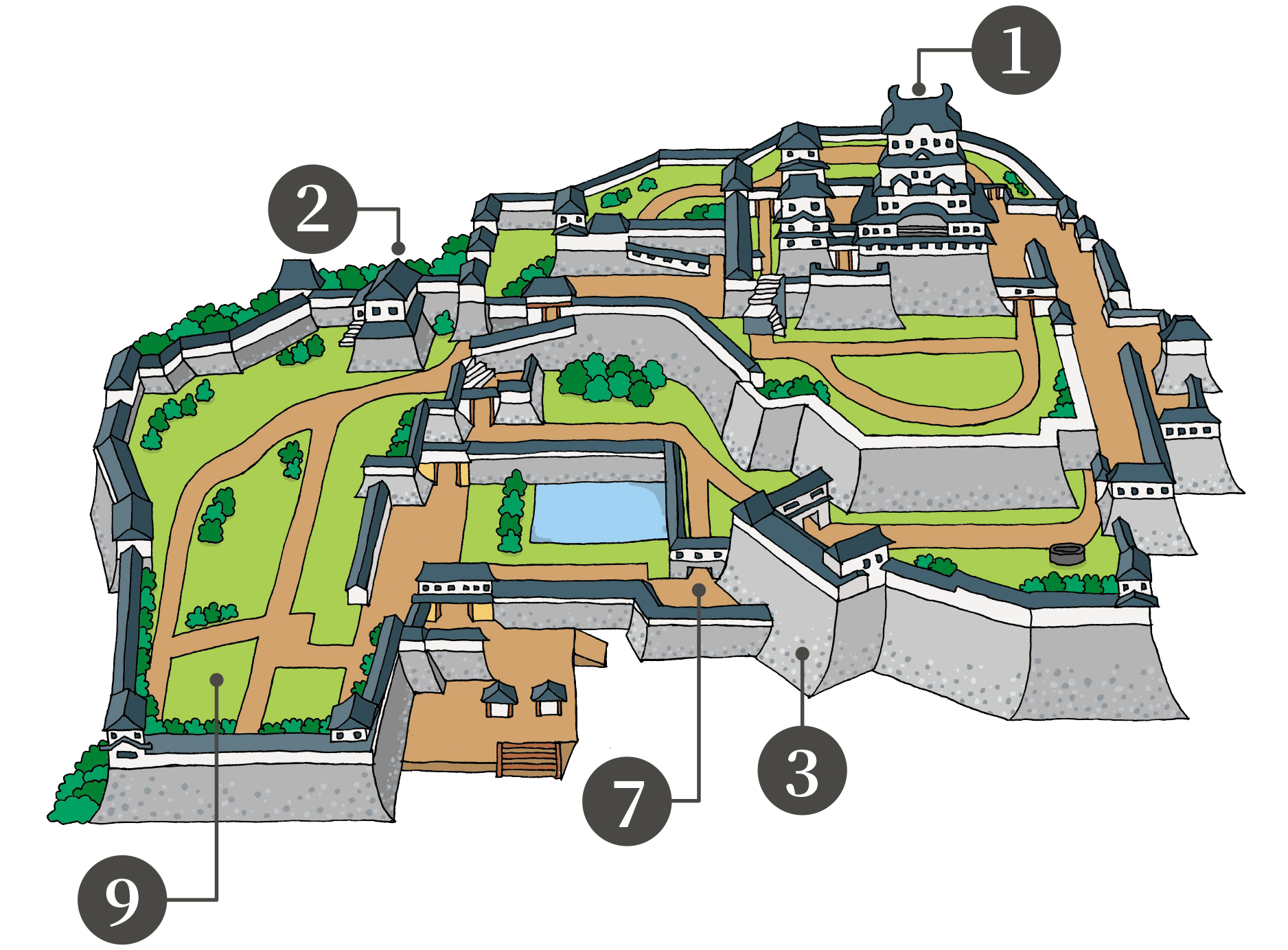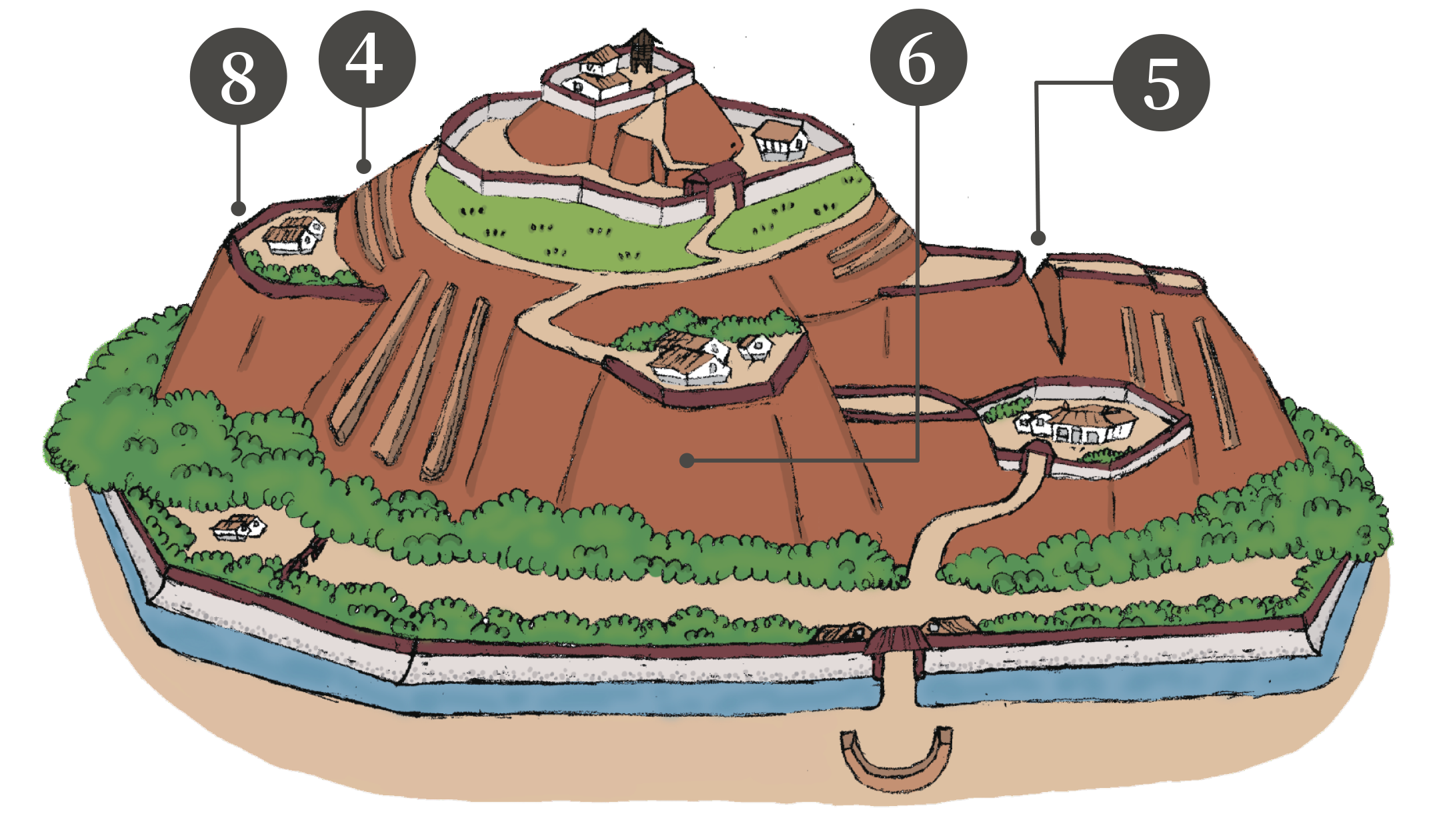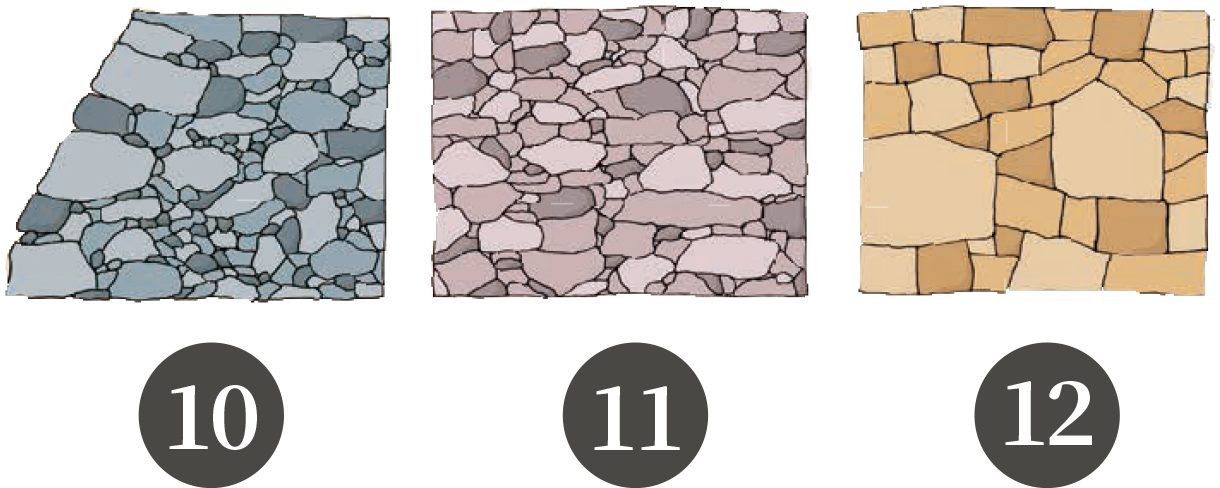Japanese Castle - Glossary
-
Typical Castle

-
Mountain Castle

-
Stone wall

-
Tensyu (The main castle tower)
The castle tower is located in the center of the castle, in the command center of the castle lord. It is the tallest structure of castle, and became widespread after the Azuchi-Momoyama period (1568 to 1600).
-
Yagura(Watchtower)
Watchtowers were built for the purposes of enemy surveillance and defense. It was also a storage place for food and tools.
-
Ishigaki (Stone ramparts)
In the Middle Ages, most castles were built with earthen mounds, but from the Azuchi-Momoyama period onward (1568 to 1600), castles were built with reinforced stone ramparts. There are three types of stone walls depending on how the stone is processed.
-
Hori(Canal)
A ditch dug in the earth to make it difficult for the enemy to penetrate the castle’s defenses. Most mountain castles did not have water-filled moats.
-
Horikiri(Trenches)
A defensive facility in which a portion of a ridge or hillside is dug vertically to block the path of an enemy invading along the ridge.
-
Kirigishi(Riverbank)
A steep surface carved out of a slope so that enemies cannot climb it.
-
Masugata(Defensive square)
This is a square-shaped open area surrounded by walls. Two entrances and exits are provided in different directions so that enemies cannot go straight through.
-
Dorui(Defensive earthworks)
Earthwork was used to produce a defensive bank with earth around it.
-
Kuruwa(Protected space)
A cleared space separated by earthen mounds, stone walls, and moats. The castle keep and palace are located here, and the outer defenses are placed to protect the castle keep.
-
Nozura zumi
(Stone wall of unworked stone)This is a type of stone wall built from unworked stones with natural shapes.
-
Uchikomihagi
(Flat-faced stone ramparts)The stones are processed to make flat surfaces and the spaces in between are filled with pebbles.
-
Kirikomihagi
(Square-cut stone ramparts)Stones are squared up and stacked without gaps.



